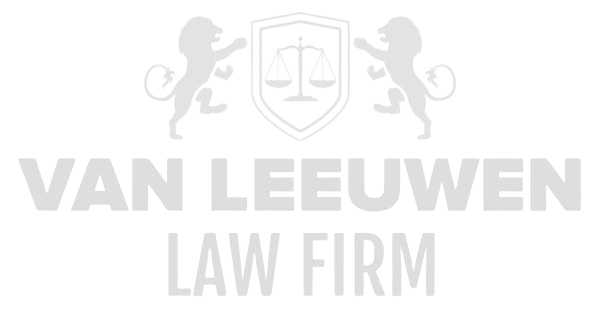Administrative exclusion, as established in Articles 154a and 176a of the Municipalities Act, constitutes one of the instruments through which the government intervenes when public order, safety, or health is threatened in acute situations. The purpose of this authority is not to punish, but to prevent immediate risks by temporarily denying access to specific locations or events to individuals who pose a real danger. The measure is characterized by its preventive nature and allows the government to respond more quickly to imminent threats than would be possible through traditional judicial procedures. In practice, this can play a crucial role in preventing escalation during events, at sporting matches, in hospitality venues, or in areas with heightened security risks, where direct action is necessary to safeguard visitors, staff, and bystanders.
The instrument of administrative exclusion touches upon a fundamental tension within the state: on one hand, the government’s duty to maintain public order and neutralize immediate threats, and on the other hand, the protection of individual fundamental rights, such as freedom of movement and the right to a fair process. This tension requires a careful weighing of interests and a thorough risk analysis before the measure is imposed. Administrative exclusion functions as a temporary and targeted tool to limit the impact of dangerous behavior while simultaneously ensuring legal review and protection of rights. The strength of this instrument lies in the combination of speed and preventive effect, allowing the government to respond effectively to threats without the need for a full judicial procedure, while preserving the rights of the individuals concerned through avenues for objection and appeal.
Purpose of Administrative Exclusion
The primary purpose of administrative exclusion is to protect public order and safety against individuals who pose a direct threat. In situations where concrete behavior or indications point to the risk of disruption or danger, the government can intervene quickly by temporarily denying access to specific locations, events, or premises. This measure is explicitly designed to prevent further escalation, allowing acute risks to be controlled immediately without resorting to judicial sanctions. The instrument not only supports the maintenance of order and safety but also enables a coordinated deployment of police, security, and municipal services, making it more effective than purely reactive measures. The legal basis in Articles 154a and 176a of the Municipalities Act provides clear legitimacy for this approach and establishes the framework for controlled application, allowing the government to balance safety with individual rights.
Administrative exclusion is inherently preventive. By temporarily barring individuals based on concrete risk indicators, harmful behavior can be prevented before incidents occur. This preventive goal distinguishes the measure from criminal procedures, which only intervene after an offense has taken place. The instrument is therefore aimed at protecting both the environment and the individuals themselves by minimizing the risk of confrontations, violence, or other disruptions. At the same time, it enables government authorities to act proactively, ensuring that not only the immediate situation but also the broader safety of public events or locations is safeguarded.
Beyond prevention, the measure supports an integrated approach to safety. It is not merely a standalone intervention but part of a broader toolkit where enforcement, oversight, and coordination with emergency services are central. The application of administrative exclusion therefore requires a careful assessment of the threat, an estimation of the concrete risks, and alignment with other measures available for maintaining public order. This systematic approach ensures that the measure is deployed in a targeted, proportional, and effective manner while avoiding unnecessary restrictions on personal freedom.
Ultimately, the core of administrative exclusion lies in the combination of speed and effectiveness. In acute situations, such as impending riots, incidents at events, or threats of violence in hospitality settings, the instrument allows for immediate intervention. This makes it a powerful tool for mayors and authorized officials, preventing the escalation of dangerous situations while safeguarding the rights of the individuals concerned through clear procedural rules and opportunities for objection and appeal.
Temporariness of the Measure
Administrative exclusion is intrinsically temporary. The measure may only be imposed for the strictly necessary period to manage the acute threat and must not result in a permanent restriction of the individual’s freedom of movement. This temporary nature is crucial to maintaining the balance between safety and individual rights. Limiting access to certain locations or events is thus a targeted and proportionate intervention aimed solely at controlling a specific, current risk. Evaluation by competent authorities plays a central role in determining the duration of the measure and in terminating it early once the threat has subsided.
The temporary character also plays a key role in public perception and acceptance of the measure. When the measure is clearly motivated and time-bound, it creates a transparent balance between safety and freedom. This fosters trust in the legitimacy of the intervention and prevents the measure from being perceived as arbitrary or disproportionate. Flexibility to extend the measure in the event of ongoing risk, combined with the possibility of early termination when the threat diminishes, enhances the effectiveness of the intervention without unnecessarily infringing upon the fundamental rights of individuals.
Moreover, the temporariness of the measure supports targeted enforcement. Police and competent authorities can concentrate their resources on the period in which the risk is actually present, allowing enforcement capacity to be deployed efficiently. In addition, this limited timeframe facilitates effective coordination with other security measures, such as temporary restraining orders or emergency decrees. Together, these elements ensure a proportional application of administrative exclusion, where the objective—managing acute threat—remains central without creating a structural infringement on personal freedom.
Preventive Nature
The preventive nature of administrative exclusion is reflected in its capacity to avert incidents before they occur. Unlike criminal sanctions, which are reactive and only intervene after an offense, this measure allows the government to address risky behavior immediately. By denying access to specific locations or events to individuals with concrete indications of threatening public order, the escalation of dangerous situations can be prevented in a timely manner. This not only protects other attendees but also enhances the effectiveness of police, security, and municipal services.
The preventive character requires a precise risk analysis. Before imposing a measure, an assessment must be made of the likelihood that the individual will actually cause disruption. This requires insight into behaviors, prior incidents, and the context in which the threat manifests. Only when a real and concrete risk is established can administrative exclusion be applied proportionally. This ensures that the measure remains focused on protection and prevention rather than arbitrary restriction of freedom.
Additionally, the preventive nature supports the integrated enforcement of public order. Administrative exclusion can form part of a broader range of interventions, such as coordination with permitting authorities, temporary restraining orders, or police deployment. Acting preventively not only reduces the risk of incidents but also sends a clear signal to the community that risky behavior is addressed in a timely manner. This strengthens public trust in the government and promotes a safe and orderly environment at events, public gatherings, and locations with heightened security risks.
Scope of Application
Administrative exclusion can be applied to a wide range of locations and situations where public order and safety are at stake. This includes specific buildings or premises such as municipal buildings, schools, or sports complexes, as well as public events, festivities, or cultural gatherings. Events that attract large crowds, such as concerts, sports matches, or entertainment districts, require targeted use of authority to minimize the risk of disruption. By focusing the measure on specific locations or individuals, the government can act effectively without imposing broad or inappropriate restrictions.
Applying administrative exclusion requires careful consideration of the nature and degree of the threat. Not every situation is suitable for this measure; the focus is on acute and concrete risks. Coordination with event organizers and emergency services is essential to ensure a coherent and safe approach. The instrument is designed to be flexible, allowing application to vary depending on the threat and context, while ensuring that individuals are clearly informed about the scope of the imposed measure.
Communication also plays a crucial role in defining the scope of application. Clear and timely information about the measure contributes to its legitimacy and effectiveness. Individuals must know which locations or events are affected, the duration of the measure, and the legal avenues available to object. This increases transparency and ensures that the measure is applied proportionally and in accordance with the law.
Procedural Aspects
The procedure for imposing administrative exclusion is designed for speed and efficiency, as the measure is often deployed in acute situations requiring immediate action. Decisions are made on a relatively short cycle by the competent authority, usually the mayor, based on concrete risk indications and a thorough analysis of the situation. A written motivation is required, providing the individual with insight into the reasons for the measure and its legal basis. This ensures a balance between rapid intervention in threatening situations and the rights of the individual concerned.
The rapid nature of the procedure enables immediate execution. Police or other competent authorities can enforce the measure almost instantly, ensuring that acute risks are effectively managed. At the same time, coordination with municipal services and the event organizer is essential to facilitate smooth implementation and prevent escalation. Registration of the measure and timely evaluation of its effectiveness are mandatory, allowing the measure to be adjusted or terminated once the threat is no longer present.
The procedure also provides for reversal in case of changed circumstances. If the threat is no longer present or the measure becomes disproportionate, it can be withdrawn. This safeguards proportionality and the temporary nature of the exclusion, preventing unnecessary violations of individual rights. Through this procedural framework, administrative exclusion is applied both effectively and lawfully, ensuring that acute safety risks are addressed without undue restriction on the rights of the persons involved.
Rights of the Individual
The rights of the individual are a fundamental component in the application of administrative exclusion. Although the measure temporarily restricts freedom of movement, safeguards for legal protection and procedural fairness remain fully intact. Individuals have the right to be notified of the measure, including a written explanation outlining the reasons for the exclusion and the legal basis. This provides the individual with insight into the decision and ensures transparency, preventing arbitrary or disproportionate application. Informing the individual is not merely a formality; it strengthens confidence in the legitimacy of the measure and establishes a framework in which the balance between public safety and individual rights is clearly visible.
In addition to notification, there is always the possibility to object and appeal. The individual can file an objection with the competent authority, usually the mayor, and can appeal to a court. These legal avenues are essential for ensuring the reviewability of the measure and serve as a safeguard against excessive or unjustified interventions. This not only allows the individual to challenge the proportionality of the measure but also reinforces public trust in the legal system by demonstrating that the authorities exercise their powers with care and oversight.
Furthermore, the rights of the individual include specific safeguards concerning the duration, scope, and implementation of the measure. Individuals must be informed about how long the exclusion will last, which locations are affected, and under what circumstances the measure can be withdrawn or adjusted. This creates a clear boundary for governmental intervention and supports the protection of fundamental rights. The combination of notification, objection and appeal options, and transparency regarding implementation ensures that the application of administrative exclusion remains both effective and lawful, with the protection of the individual not subordinate to the objectives of public order and safety.
Coherence with Other Measures
Administrative exclusion is not an isolated tool but can be used complementarily alongside other measures aimed at maintaining public order and safety. It can precede emergency orders, temporary ordinances, or other temporary restrictions, making it part of an integrated safety strategy. By combining administrative exclusion with police interventions, temporary residence bans, or permit checks, a coherent system of preventive and corrective actions is created. This coherence enhances the effectiveness of each individual instrument and prevents fragmented or inconsistent responses, which is essential in situations of acute threat or complex, organized risks.
Moreover, the measure supports coordinated deployment of emergency services and municipal authorities. In situations involving multiple agencies, such as the police, fire services, or event coordinators, administrative exclusion can serve as a first line of preventive enforcement. By removing or barring risky individuals at an early stage, escalations are limited, allowing emergency services to focus on other critical tasks, such as crowd control or medical interventions. Thus, the measure functions as a strategic instrument that enhances the effectiveness of broader safety operations and minimizes the likelihood of damage, incidents, or conflicts.
Finally, coherence with other measures creates clarity regarding authority and responsibilities. Positioning administrative exclusion within a broader framework of interventions prevents overlaps or conflicts between different agencies. This contributes to the professionalization of safety management, strengthens the legal defensibility of interventions, and ensures that measures are applied proportionally and consistently. In this way, both public order protection and the legal protection of individuals are safeguarded.
Competent Authority
The competent authority for imposing administrative exclusion lies primarily with the mayor. As the head of the municipal organization and representative of the local government, the mayor bears ultimate responsibility for ensuring public order and safety. This includes assessing acute risks, drafting the decision, and coordinating its implementation by the police or other competent authorities. The legal foundation in the Municipal Law, Articles 154a and 176a, provides clear frameworks for exercising this authority and emphasizes diligence, proportionality, and temporary application.
Delegation to other competent officials or police officers is permitted, but ultimate responsibility remains with the mayor. This means that decisions always take place under the oversight and coordination of the highest local authority. Coordination with relevant agencies and, where applicable, event organizers is crucial for effective implementation of the measure. This structured allocation of authority ensures that administrative exclusion is not applied ad hoc or uncontrolled but is always part of a coordinated and professional enforcement approach.
Additionally, the authority includes oversight and evaluation of implementation. Enforcement by police and other agencies must be proportionate and strictly limited to the duration and scope of the measure. Written decisions, registration of measures taken, and evaluation of effectiveness are required so that the authority can justify that the exclusion was necessary, proportionate, and temporary. This strengthens the legal defensibility of the measure and ensures that the instrument is deployed effectively and lawfully to maintain public order and safety.
Enforcement and Supervision
Enforcement and supervision are essential components of administrative exclusion. Implementation of the measure primarily rests with the police and other competent authorities, who ensure that the individual complies with the imposed restrictions. Immediate action in the event of a violation is permitted and necessary to guarantee the measure’s effectiveness. Enforcement aims to minimize risks for others present and to maintain continuity and order at the location or event.
Monitoring and documentation are critical aspects of enforcement. All measures taken and interventions conducted must be recorded, allowing the authority to justify why and how the measure was applied. This documentation also serves as the basis for evaluating effectiveness, determining whether the measure achieved its intended impact, and whether similar measures are justified in future incidents. Coordination with other safety measures, such as temporary residence bans or emergency orders, strengthens coherence in enforcement and prevents overlap or conflicts of authority.
Moreover, enforcement is always linked to the temporary nature of the measure. Once the threat subsides or the period of necessity expires, the measure must be lifted, and supervision adjusted accordingly. This prevents unnecessary restrictions on the individual and ensures proportionality in government enforcement. Sanctions for violations can be applied administratively and, where relevant, criminally, reinforcing compliance without disproportionately expanding the measure itself.
Proportionality and Subsidiarity
The application of administrative exclusion must always comply with the principles of proportionality and subsidiarity. This means that restrictions on freedom may only occur when there is a direct and concrete threat to public order, safety, or health. Less intrusive measures, such as warnings or supervision, must first be considered before imposing an exclusion. This assessment is essential to maintain the balance between public safety and individual rights and to prevent excessive intervention.
Evaluation at each stage is mandatory. Before, during, and after the implementation of the measure, it must be assessed whether the restriction is necessary, proportionate to the threat, and effective in achieving the preventive objective. Temporariness plays a crucial role: maintaining the measure only for the period in which the risk is actually present prevents unnecessary infringement of fundamental rights. This ensures that administrative exclusion does not become an arbitrary or permanent restriction.
Subsidiarity and proportionality also require clear communication to those affected. They must be informed of the reasons for the measure, its scope and duration, as well as the legal avenues for objection or appeal. This ensures that the measure is legally reviewable and that the balance between safety and rights is maintained. In situations of escalation or acute threat, this careful application allows the government to act effectively without unnecessarily infringing on the fundamental rights of individuals.









